Honoring Black History Month with 6 Innovators in Science and Technology
It's Black History Month!
To honor Black History Month, we're celebrate black excellence in science and technology with these six incredible innovators.
1. Mae Jemison was the first African American woman to travel in space aboard the Space Shuttle Endeavour in September 1992.
"Sciences provide an understanding of a universal experience, and Arts are a universal understanding of a personal experience... they are both a part of us and a manifestation of the same thing... the arts and sciences are avatars of human creativity."
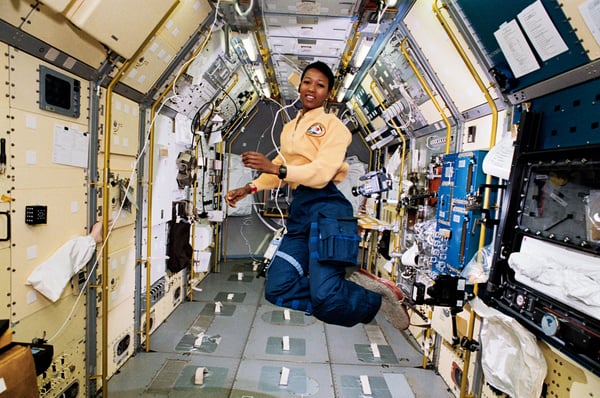 On board the Spacelab Japan module on Endeavour. (Photo: WikiCommons).
On board the Spacelab Japan module on Endeavour. (Photo: WikiCommons).
Mae Jemison (October 17, 1956, to Present) is an American engineer, physician, and former NASA astronaut. She joined NASA's astronaut corps in 1987 and was selected to serve on the STS-47 mission, during which she orbited the Earth for nearly eight days from September 12 to 20, 1992. Therefore, she became the first black woman to travel to space when she served as a science mission specialist on the Space Shuttle Endeavour, which put her in charge of science experiments aboard the shuttle.
Jemison graduated from Stanford University with degrees in chemical engineering and African and African-American studies. She then earned her medical degree from Cornell University. She was a physician before becoming an astronaut, working as a doctor for the Peace Corps in Liberia and Sierra Leone from 1983 until 1985.
After receiving several awards and honorary doctorates, she taught at Dartmouth College and established the Jemison Group. This organization encourages science education and the advancement of technology.
2. Granville T. Woods was a pioneering inventor who developed safety and communication mechanisms for rail systems.
"His modifications made the subways in New York City possible," explained David L. Head, a former New York City bus driver who wrote "Granville T. Woods: African American Communication and Transportation Pioneer" (2013).
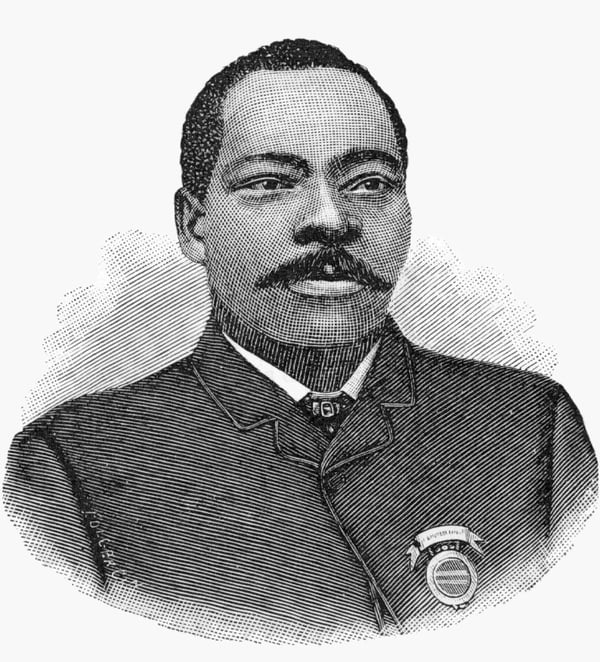
(Image: WikiCommons)
Granville Tailer Woods (April 23, 1856, to January 30, 1910) was a self-taught mechanical and electrical engineer with over 60 patents.
Woods's most notable invention in the 1880s was a communication system, which enabled trains to communicate with railway stations and prevent accidents. He referred to it as the Synchronous Multiplex Railway Telegraph. At the time, train conductors had no reliable way to communicate with rail stations. A collision would likely occur if two trains were simultaneously en route to the exact location. Woods's invention relied on ambient static electricity from existing telegraph lines. He suspended a coil below the train so that as it moved along the rails, a magnetic field would be created around it, which allowed messages to be sent between train stations and moving trains. His work assured a safer and better public transportation system for urban environments in the United States.
3. Valerie Thomas, Data Scientist, and Former NASA Space Science Data Operations Associate Chief.
"I think strides have been made to encourage more females to consider entering the science and engineering fields. There are special STEM programs in which girls are participating, books for girls about female role models, and hands-on competitions and other activities in which girls are being successful."
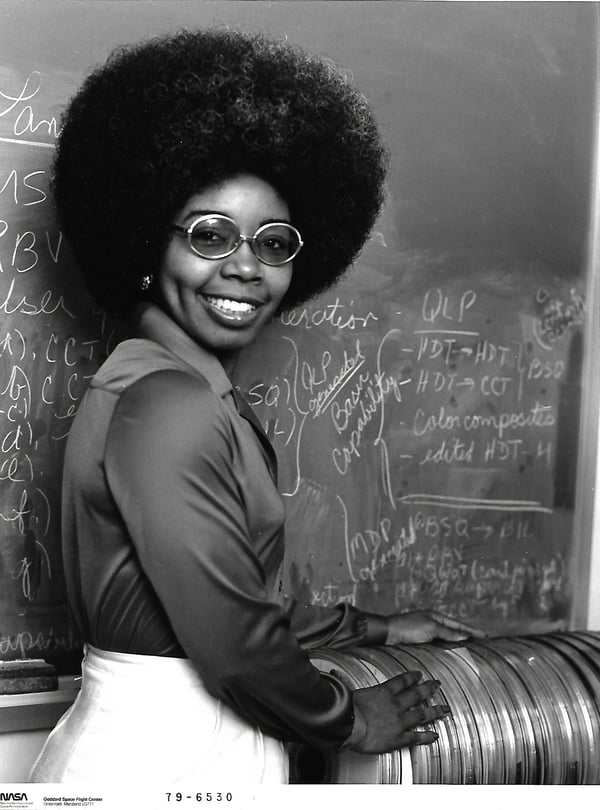 Valerie Thomas, in 1979, stood with a stack of early Landsat Computer Compatible Tapes (CCTs). Thomas was responsible for the development of early Landsat digital media formatting. (Photo: NASA).
Valerie Thomas, in 1979, stood with a stack of early Landsat Computer Compatible Tapes (CCTs). Thomas was responsible for the development of early Landsat digital media formatting. (Photo: NASA).
Valerie Thomas (February 8, 1943, to Present) is best known for inventing the illusion transmitter, for which she received a patent in 1980 during her long career at NASA. The device is still in use, and scientists are working to incorporate it into modern medicine and technology tools.
Over her 30+ year career at NASA, she managed the development of NASA's image-processing system for Landsat, the first satellite to send images from outer space. In addition, she led a team of 50 for the Large Area Crop Inventory Experiment (LACIE), a joint effort between NASA, NOAA, and the USDA that demonstrated the ability to use space technology to predict wheat yield.
Thomas, one of only two women in her class, earned a degree in physics at Morgan State University. She has received many awards, including the Goddard Flight Center Award of Merit and the NASA Equal Opportunity Medal.
4. Lonnie Johnson, an aerospace engineer, is known for inventing the Super Soaker, which famously made $200 million in retail sales in its first two years on the market.
"Kids need exposure to ideas and an opportunity to experience success. Once you get that feeling, it grows and feeds itself – but some kids have got to overcome their environments and attitudes that have been imposed on them."
 (Photo: Getty Images).
(Photo: Getty Images).
Lonnie George Johnson (October 6, 1949, to present) is an inventor, aerospace engineer, and entrepreneur. He is a former member of the US Air Force who worked on Galileo's mission to Jupiter at NASA and now dedicates his efforts toward green energy projects.
"Johnson holds a B.S. degree in Mechanical Engineering, an M.S. degree in Nuclear Engineering, and an honorary Ph.D. in Science from Tuskegee University. After graduation, he worked as a research engineer at Oak Ridge National Laboratory. Then, he joined the U. S. Air Force as Acting Chief of the Space Nuclear Power Safety Section at the Air Force Weapons Laboratory in Albuquerque, New Mexico. He left the Air Force in 1979 to accept a position as Senior Systems Engineer at NASA's Jet Propulsion Laboratory in Pasadena, California, where he worked on the Galileo mission to Jupiter."
He invented the Super Soaker water gun in 1990, which has been among the world's bestselling toys ever since!
5. Shirley A. Jackson was a theoretical physicist and inventor who was the first African-American woman to earn a Ph.D. in Theoretical Solid State Physics from MIT.
"The world needs bright young people, as many as possible, from all backgrounds to address our greatest challenges: climate change; national and global security; the mitigation of disease and human health; food, water, and energy security for a growing global population. All of these challenges require new science and new technology. To take them in hand, we must inspire our children today to learn what will allow them to discover and innovate tomorrow."
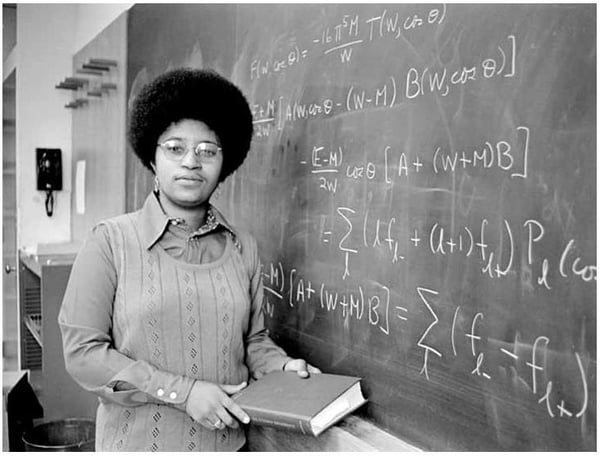 (Photo: MIT Museum).
(Photo: MIT Museum).
Shirley Ann Jackson (August 5, 1946, to the Present) is an American physicist and the 18th president of Rensselaer Polytechnic Institute. She is the first African-American woman to earn a doctorate at the Massachusetts Institute of Technology (MIT).
She was a senior leader in academia, government, industry, and research. Jackson previously served as a theoretical physicist at Bell Labs, as Chairman of the US Nuclear Regulatory Commission, and as a professor of theoretical physics at Rutgers University. Her research laid the foundation for others to build fiber optic cables, portable faxes, and solar cells.
President Obama named Jackson the President's Intelligence Advisory Board co-chair in 2014. She also serves on the Secretary of State's International Security Advisory Board and Secretary of Energy Advisory Board.
6. Guion Bluford, Jr. The first African American to go into space in 1983 as a member of the crew of the Orbiter Challenger on the mission STS-8.
"I felt an awesome responsibility, and I took the responsibility very seriously of being a role model and opening another door to black Americans. The important thing is not that I am black but that I did a good job as a scientist and an astronaut. There will be black astronauts flying in later missions … and they, too, will be people who excel, not simply who are black . . . who can ably represent their people, their communities, their country."
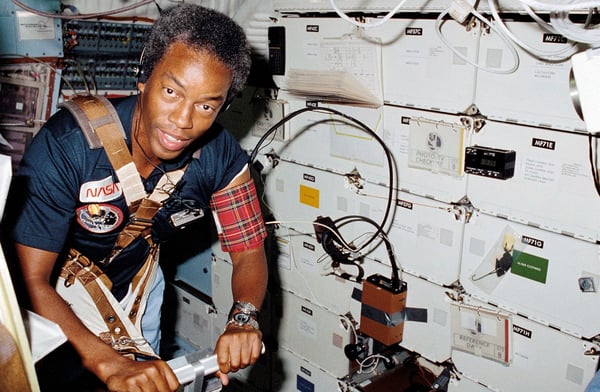 Bluford on board NASA's Orbiter Challenger on the mission STS-8 in 1983 (Photo: WikiCommons).
Bluford on board NASA's Orbiter Challenger on the mission STS-8 in 1983 (Photo: WikiCommons).
Guion Stewart Bluford Jr. (November 22, 1942, to Present) was an aerospace engineer, fighter pilot, decorated Vietnam veteran, instructor pilot, and NASA Group 8 mission specialist on four Space Shuttle missions.
He earned a Bachelor of Science degree in aerospace engineering from Pennsylvania State University in 1964, a Master of Science degree in Aerospace Engineering from the U.S. Air Force Institute of Technology (AFIT) in 1974, a Doctor of Philosophy degree in Aerospace Engineering with a minor in Laser Physics, again from AFIT, in 1978, and a Master of Business Administration degree from the University of Houston–Clear Lake in 1987.
Bluford was inducted into the International Space Hall of Fame in 1997, the United States Astronaut Hall of Fame in 2010, and the National Aviation Hall of Fame in 2019.
At Intellis, we are committed to cultivating a diverse, inclusive, and collaborative workplace.
We know that a richness of diversity empowers us to develop the most creative and cutting-edge solutions for our clients and partners.
If you're interested in learning how we can help make collecting and analyzing data for facility condition assessment and capital planning more efficient, please schedule a demo with our team of experts today!



